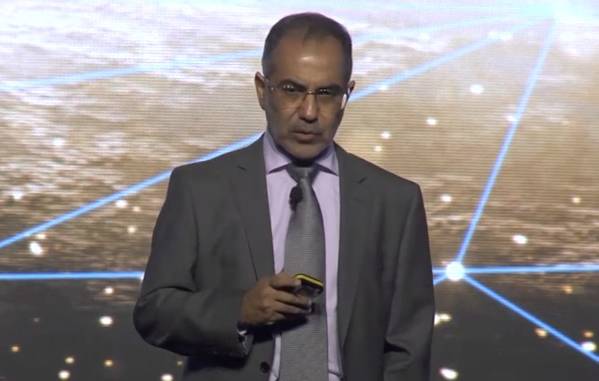
The future of the oil field is digital.
Qasem Al Kayoumi, ADNOC’s SVP, technical center, said all the company’s new field developments will rely on digital technology. Speaking at the Life 2019 Landmark Innovation Forum & Expo in Houston, he said digitalization is helping the operator optimize production.
ADNOC’s Hail & Ghasha development offshore Abu Dhabi in less than 15 meters of water is designed to minimize offshore personnel needs, he said. The sour gas field expected to go online in 2024 will rely on 10 artificial islands for drilling and one for gas processing. Compared to a conventional field, he said, the fully digitized Hail & Ghasha facility will slash manpower needs in half.
A smart field can take advantage of advanced analytics, monitoring and digital twins while conventional fields had to rely on human analytics and suffer more down time. The digital field, he said, is expected to reduce maintenance costs by 25% to 30% and improve production availability and reliability. The digital field will have 75% lower hazard exposure than the conventional counterpart, he said. Finally, he said, a smart control system will reduce capex by 30% and power consumption by 28% over a conventional control system.
The facility will use drones, cameras, robotics, remote monitoring and control systems, and predictive maintenance, he said.
ADNOC is embracing digitalization as a strategy for the future. The operator is working with IBM’s Watson to recognize rock types to improve efficiencies, he said. ADNOC is also working with Landmark to build a country-wide Integrated Capacity Model (ICM) to represent more than 80 reservoirs, he said.
“It will have all of our wells and service facilities onshore and offshore in one platform. We will use this model for day to day production optimization,” Al Kayoumi said. “It’s the digital twin of the whole company’s assets, surface and subsurface.”
ADNOC plans to use the ICM to determine which wells to open up when demand for oil peaks, which to close when demand drops, and which to open to maintain production targets when a well is shut in, he said.
Looking ahead, ADNOC aims to carry out an autonomous well pilot to optimize the production stream on a minute-to-minute basis.
The concept is linked to edge computing and will monitor the well continuously. The ability to apply advanced analytics with real-time data makes it possible to optimize production, he said.
“We will compare the well’s performance with the digital twin of that well and adjust accordingly to improve efficiency and free the engineers to do other activities,” Al Kayoumi said.



